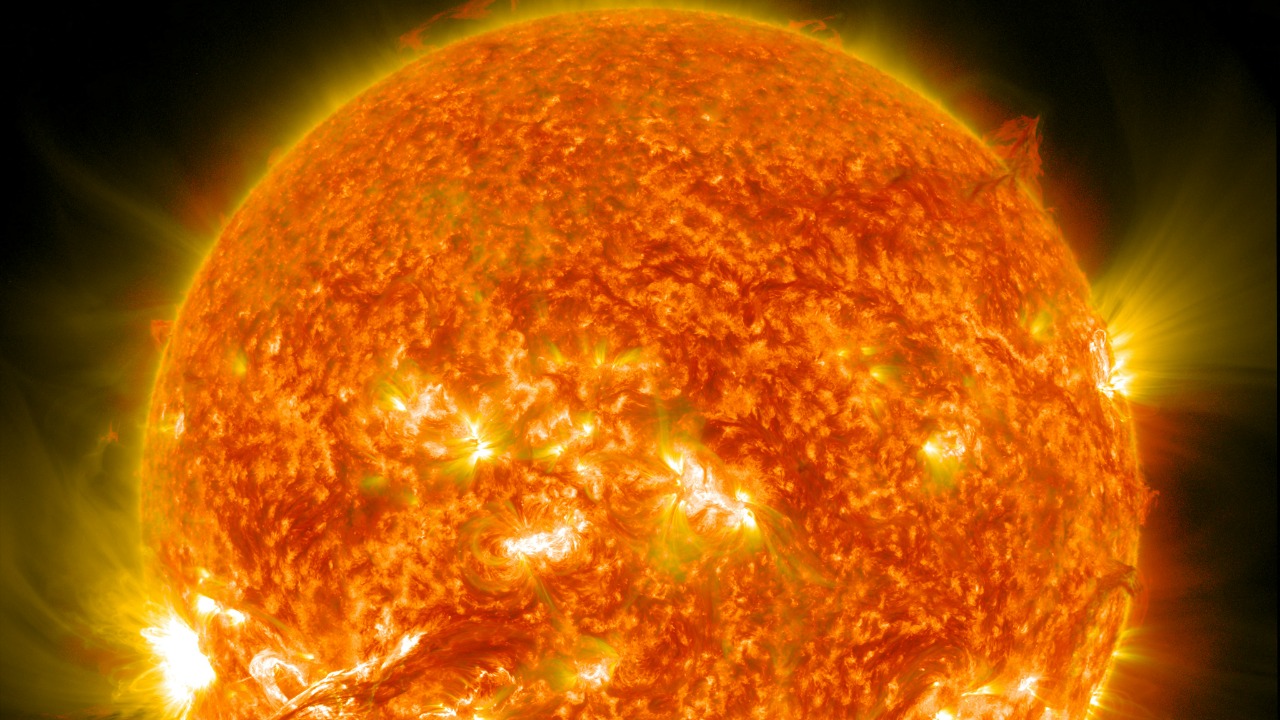
For many years, scientists have been perplexed by the Sun’s corona, the outermost part of its atmosphere, which burns at a staggering temperature of up to 2 million degrees Celsius, far hotter than its surface temperature of around 5,500 degrees Celsius. A team of researchers led by the University of Wisconsin-Madison has now proposed a compelling explanation for this long-standing mystery, involving Alfvén waves generated by the Sun’s magnetic field. This breakthrough, which builds on data from NASA’s Parker Solar Probe, could revolutionize our understanding of stellar atmospheres and the dynamics of solar wind.
The Solar Corona Mystery
The Sun, like any other star, has a basic structure that includes the photosphere, its visible surface, which has a temperature of approximately 5,500 degrees Celsius. Beyond this lies the corona, an aura of plasma that extends millions of kilometers into space and burns at a temperature of 1–2 million degrees Celsius. This information has been gathered through historical observations by NASA’s Solar Dynamics Observatory.
The puzzle of the Sun’s corona was first noted in the 1940s during solar eclipses. Spectroscopic data revealed unexpectedly high temperatures in the corona, a phenomenon documented in early reports from the American Astronomical Society. This temperature inversion defies intuitive heat transfer principles, with energy seemingly flowing outward against the gradient, a conundrum that has puzzled scientists since the 1970s.
Historical Attempts to Solve the Enigma
Over the years, various theories have been proposed to explain this enigma. In the 1970s, Ray Weymann suggested that acoustic wave heating, where sound waves from the Sun’s interior propagate energy upward, could be the answer. This theory, however, was later found to be insufficient to account for the observed temperatures.
In the 1990s, the focus shifted to magnetic reconnection models. Researchers like Priest and Forbes modeled explosive magnetic field releases as a potential heat source. Around the same time, Eugene Parker introduced the nanoflares hypothesis, envisioning tiny, frequent eruptions akin to larger solar flares but on a minuscule scale.
Role of Alfvén Waves in Heating
Alfvén waves are magnetohydrodynamic oscillations in the Sun’s plasma, with speeds reaching hundreds of kilometers per second. These waves, generated by surface convection, carry energy through the tenuous corona without dissipating quickly. This was confirmed by the Parker Solar Probe during its 2021 flybys.
According to simulations from the University of Wisconsin-Madison team, these waves undergo reflection and amplification at the transition region, leading to shock heating. This process was supported by 3D modeling in their 2024 study published in The Astrophysical Journal.
Evidence from NASA’s Parker Solar Probe
Launched on August 12, 2018, aboard a Delta IV Heavy rocket from Cape Canaveral, Florida, the Parker Solar Probe was designed to approach within 6.1 million kilometers of the Sun. During its 2022–2023 encounters, the probe made direct in-situ measurements, detecting Alfvén wave signatures at altitudes of 20–40 solar radii. This data was reported in NASA’s mission updates.
The probe’s FIELDS and SWEAP instruments captured plasma fluctuations indicating wave-driven energy transfer rates of up to 200 watts per square meter, providing further evidence for the role of Alfvén waves in heating the Sun’s corona.
Implications for Solar Physics and Beyond
The Alfvén wave model not only resolves discrepancies in solar wind acceleration, predicting outflows at 400–800 km/s consistent with SOHO satellite observations since 1995, but also has significant implications for space weather forecasting. Understanding coronal heating could improve predictions of solar storms impacting Earth, a point emphasized by NOAA’s Space Weather Prediction Center.
Furthermore, this model could be extended to other stars. Similar mechanisms might explain hot coronas in red dwarfs, as suggested by comparative studies from the Kepler mission data archive.
Future Research Directions
Future enhancements to the Parker Solar Probe’s ongoing mission through its final 2024–2025 orbits aim for even closer approaches at 3.8 million kilometers. This will provide even more detailed data to further our understanding of the Sun’s corona.
Upcoming contributions from the European Space Agency’s Solar Orbiter, launched in 2020, will provide multi-angle imaging to validate wave propagation models. Ground-based synergies with telescopes like the Daniel K. Inouye Solar Telescope in Hawaii, operational since 2021, will also play a crucial role in high-resolution surface magnetometry.
More from MorningOverview